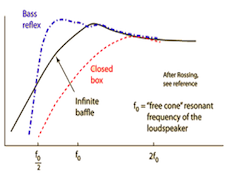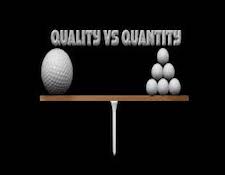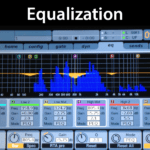It’s the time of year for saving money!
We’ve all heard them. Whether at a stop light, gas station, or perhaps on the street in front of our home, most adults tend to frown upon young people with huge stereo systems in their cars producing voluminously loud levels of low frequencies. It is not unusual that in such situations the car is possessed of a lower monetary value than the audio system.
 Bass is, for most music lovers and certainly for audiophiles, a very important part of music. Ever tapped your foot to a really good beat of a really good song? Well, that beat comes from the bass. It is therefore understandable that bass is not only difficult to get exactly right, it also garners disagreements as to what it should sound like when it is done exactly right.
Bass is, for most music lovers and certainly for audiophiles, a very important part of music. Ever tapped your foot to a really good beat of a really good song? Well, that beat comes from the bass. It is therefore understandable that bass is not only difficult to get exactly right, it also garners disagreements as to what it should sound like when it is done exactly right.
There are two schools of thought to the low frequencies our systems produce. One is bass response that is highly accurate and detailed – bass that is tonally and pitch correct. What is highly cherished is actually hearing the difference between a bass guitar, a bass drum and perhaps the low octaves of a piano or an organ.
A few years ago, I was very curious about a new line of products recently introduced in the marketplace. Touted as high performance, I was curious if the term “lifestyle” was maybe more appropriate. This manufacturer had a room at an audio show and upon entering, all I heard was loud, thunderous bass. This was predominately due to the two large subwoofers strategically positioned beside two floorstanding speakers in the room. When I asked if the subs could be turned off so I could actually hear the equipment, the host looked at me as if I had lost my mind. This is the second aspect of bass response – the quantity of bass. Huge, deep, subterranean low levels of sonic explosions are, for some reason, highly valued by some music listeners.
 Coming to terms of which differing aspect of bass response, quality or quantity, is most preferred is often a difficult question to answer. Some subwoofer manufacturers have and do use terms like “earthshaking” when describing the bass their products produce. If such an adjective is used in an advertisement, should the reader then conclude that the product delivers quantity over quality? Are such products the equivalent of the home version of that annoying car at the gas station? Likewise, if a manufacturer claims their product is highly detailed and accurate, should the consumer then conclude that there is little in the way of low frequency dynamic power? Is it even possible to have both?
Coming to terms of which differing aspect of bass response, quality or quantity, is most preferred is often a difficult question to answer. Some subwoofer manufacturers have and do use terms like “earthshaking” when describing the bass their products produce. If such an adjective is used in an advertisement, should the reader then conclude that the product delivers quantity over quality? Are such products the equivalent of the home version of that annoying car at the gas station? Likewise, if a manufacturer claims their product is highly detailed and accurate, should the consumer then conclude that there is little in the way of low frequency dynamic power? Is it even possible to have both?
Enter the more unpopular aspect of audio – cost.
As it is with most things and certainly high performance audio, cost makes a significant difference. Purchase a set of speakers that cost $2000.00 and it may be necessary to augment the bass response with subwoofers. Purchase a set of speakers that cost six figures (and up) and the bass will very likely be profoundly good.
Speaker types also matter. Planar speakers have always been accused of a lack of bass unless precipitously large in physical size. Electrostatic speakers also, to a degree, suffer the same fate as planar but typically compensate by incorporating a powered woofer in the bottom of the cabinet. Of course, this also requires AC outlets near the speakers, something not always within convenient reach. Dynamic speakers seem to be all over the board in terms of bass response. Some are very good, some very bad, some middle of the road, and some it just depends.
 Components themselves also play a part in the quality and amount of bass produced. Some manufacturers voice their components to be a little bass heavy, possibly because they realize so many listeners like it that way. Some strive for accuracy to the recording and prefer to let the chips fall where they will. In that instance should the bass not be harmonious to your standards of listening, then switch to a different song – maybe it will be better.
Components themselves also play a part in the quality and amount of bass produced. Some manufacturers voice their components to be a little bass heavy, possibly because they realize so many listeners like it that way. Some strive for accuracy to the recording and prefer to let the chips fall where they will. In that instance should the bass not be harmonious to your standards of listening, then switch to a different song – maybe it will be better.
Which segues into the recording. I’m constantly mystified by the differences in recordings. On my system, I have times when on certain songs I think “what happened to the bass?” Other songs may be the exact opposite. Most commonly, each different song will have a perceptively different, and oftentimes a better low frequency sonic presentation.
Oddly enough, I’ve always preferred high frequencies to profoundly low, booming bass. I have a greater level of interest and will typically be more endeared to a song with tremendous cymbal crashes that seem to spend forever in decay. This difference in my preferences are what makes audio so interesting – everyone has their own likes and dislikes.
What I do not want is some canned, homogenized, one size fits all, unisex, preplanned, pre-programed sonic presentation of a low frequency explosion to the exclusion of mids and highs because some manufacturer thinks I like it that way. I want to hear the music. I want to hear as accurate a presentation of the recording as my system is capable of delivering. I will always lean towards speakers and components voiced to be more “neutral” as opposed to something more left or right of center. Does that make me wrong or right? Actually, neither.
Bass response will very likely continue to be something that is debated and upon which disagreement flourishes. Everyone has their own set of preferences in how the sonic presentation is best accomplished. What is perhaps the most wonderful thing about bass, and any of the range of frequencies for that matter, as long as the listener is satisfied in what he or she hears, then that is bass response done exactly right.








